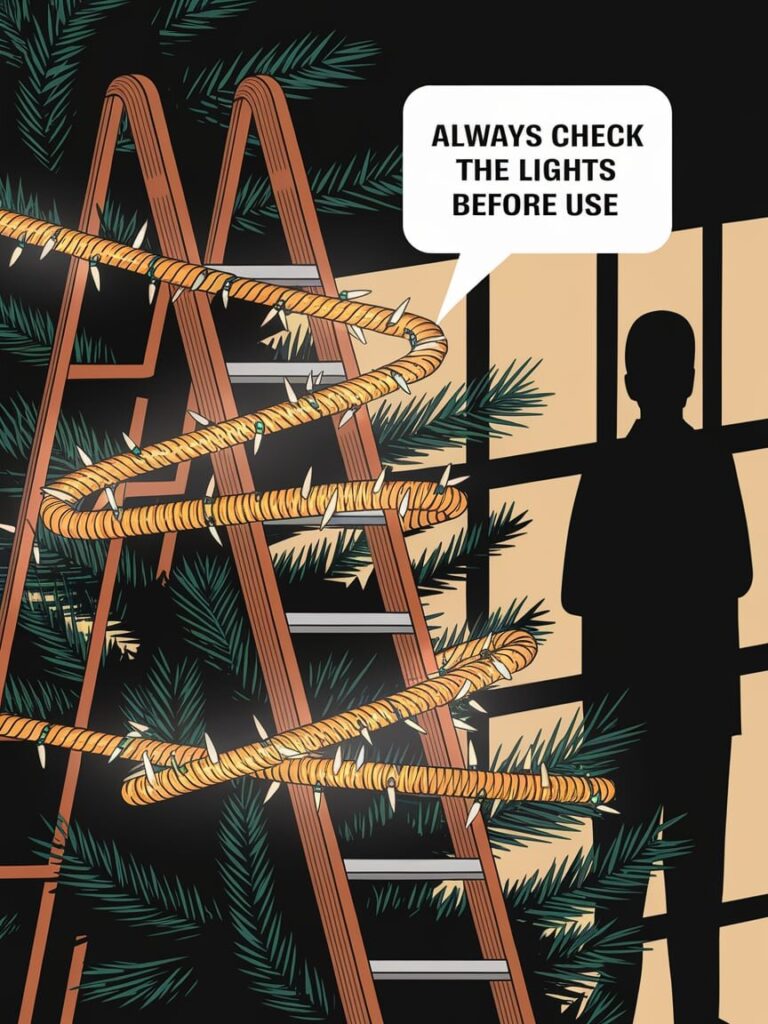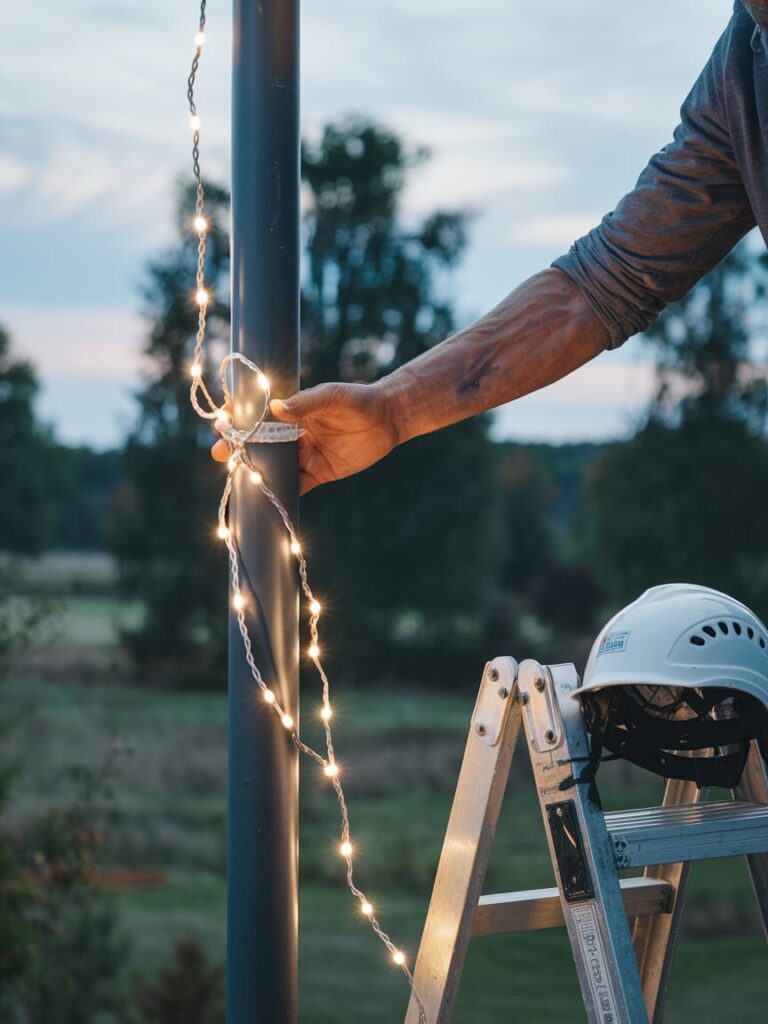Rope lights are a fantastic addition to both indoor and outdoor décor, providing flexible and ambient lighting that can transform spaces with ease. While they’re relatively simple to install, it’s essential to follow safety guidelines to prevent accidents and ensure that your lights function properly. Below are safety tips and best practices for installing rope lights that will help you enjoy their glow with peace of mind.
Page Contents
Understanding Rope Lights and Their Safety Features
Before diving into installation, it’s helpful to know a bit about outdoor lights and their structure. Rope lights consist of small LED or incandescent bulbs encased in flexible, durable plastic tubing. This protective layer makes them resistant to outdoor elements and enables them to bend easily around various surfaces, making them ideal for both indoor and outdoor use.
When shopping for rope lights, look for features such as water resistance, UV protection, and UL (Underwriters Laboratories) certification. These features ensure the lights meet safety standards and reduce risks when installed in different environments.
1. Choose the Right Rope Lights for Your Setting:
Selecting the right type of rope lights is the first step in ensuring a safe installation. Indoor rope lights aren’t built to withstand moisture or extreme temperatures, so using them outdoors can lead to malfunctions or even pose a fire hazard. Look for rope lights labeled specifically for outdoor use if you’re installing them outside. These are usually waterproof, UV-resistant, and designed to endure various weather conditions.
For indoor use, make sure to choose lights that match your installation needs. Some lights may generate more heat than others, which could be a concern if you’re installing them near fabrics or other flammable materials.
2. Inspect the Rope Lights before Installation:
Even new rope lights can sometimes have manufacturing defects, so it’s wise to inspect them thoroughly before installing. Look for any signs of damage to the tubing, exposed wires, or broken bulbs. Check the packaging for certifications like UL, which verifies the lights have undergone safety testing.
After inspecting the lights, plug them in to confirm they work correctly. This step helps you avoid potential issues later and ensures the lights are safe to install. If you notice any flickering, loose connections, or heat buildup, consider replacing the lights or returning them to the store.
3. Choose a Safe Power Source:
Using a suitable power source is critical for safely installing outdoor lights. Check the voltage requirements on your rope lights and make sure they’re compatible with the outlet you plan to use. Avoid plugging too many strands together, as this can overload circuits and lead to electrical hazards. Most rope lights come with recommendations for the maximum number of strands that can be connected in series.
For outdoor installations, use a weatherproof extension cord rated for outdoor use. It’s also a good idea to plug the lights into a GFCI (Ground Fault Circuit Interrupter) outlet, which protects against electric shock in damp environments. These outlets are commonly found in kitchens, bathrooms, and outdoor areas.

4. Avoid Overheating and Fire Hazards:
Rope lights, especially incandescent ones, can generate heat when in use. To prevent overheating, avoid installing lights in enclosed spaces where heat can’t escape. For indoor installations, it’s best to keep them away from flammable materials, such as curtains, paper, or upholstery. LED rope lights are a safer choice, as they emit less heat than incandescent options.
Another way to reduce heat buildup is to use shorter segments of rope lights rather than connecting too many strands. Following the manufacturer’s recommendations for the maximum run length ensures the lights function safely and prolongs their lifespan.
5. Secure the Rope Lights Properly:
Securing rope lights properly not only enhances the appearance of your installation but also prevents safety issues. Use clips, hooks, or adhesive mounts specifically designed for securing lights. Avoid using nails or staples, as they can pierce the protective tubing and expose the wiring, leading to short circuits or electric shocks.
When installing rope lights along ceilings or walls, space the clips evenly to prevent sagging. For outdoor installations, make sure to use weather-resistant clips that won’t rust or degrade in the elements. This is especially important for rope lights installed in high-traffic areas or near ground level, where they might be exposed to rain, wind, or snow.
6. Use Timers or Smart Plugs:
Leaving rope lights on for extended periods can lead to overheating and reduce the lifespan of the lights. Timers or smart plugs are an excellent solution for controlling when your lights turn on and off. Setting them to operate during specific hours conserves energy and reduces wear, especially if the lights are installed outdoors where they may be forgotten.
Smart plugs also allow you to control your lights remotely, making it easy to turn them off when you’re away from home. This added layer of control ensures your lights are only on when necessary, improving safety and efficiency.
7. Keep Rope Lights Away from Water Sources:
While some lights are designed for outdoor use, it’s best to keep them away from direct water exposure, such as pools, fountains, or sprinklers. Water and electricity don’t mix, and even waterproof rope lights can become hazardous if submerged or exposed to excessive moisture. Place outdoor lights in areas with minimal water contact, and ensure they’re positioned away from sprinklers or hoses.
For added safety, make sure all outdoor connections are sealed and waterproofed. Using silicone sealant around connectors or junction points can help keep moisture out, prolonging the life of your lights and preventing shorts.

8. Follow the Manufacturer’s Guidelines:
Every set of rope lights comes with specific guidelines and instructions for safe installation and use. Following these instructions is essential for ensuring the lights function properly. Manufacturers include information on the maximum number of strands you can connect, the proper voltage, and other important usage details. or reduced product lifespan. Taking the time to read and understand the manufacturer’s instructions helps you avoid common mistakes and ensures your lights remain safe and efficient.
9. Regularly Inspect and Maintain the Lights:
Regular maintenance is a key part of keeping your rope lights safe and functioning well. For indoor installations, check periodically for any signs of wear, such as fraying or exposed wires. Dust can also accumulate on the lights, so gently clean them with a dry cloth to maintain brightness and prevent buildup that could pose a fire risk.
For outdoor lights, inspect the installation after heavy rains, storms, or seasonal changes. Make sure clips and mounting points are still secure, and check for any signs of moisture inside the tubing. Addressing small issues early on helps you avoid potential safety hazards down the line.
10. Unplug When Not in Use:
For both safety and energy efficiency, unplug the lights when they’re not in use, especially when you’re away for extended periods. This habit prevents overheating and lowers the risk of electrical issues, particularly for outdoor installations where elements may expose the lights to potential hazards. Using a smart plug can make this easier by allowing you to set schedules or remotely turn off your lights.
Enhance Your Space Safely with AQ Lighting Group’s Rope Lights:
Installing rope lights is a fantastic way to add ambiance to your home, but doing so safely is essential. For high-quality, custom-cut lights that are safe for both indoor and outdoor use, consider AQ Lighting Group. Their lights come with durable, weather-resistant features that ensure a safe, reliable installation while giving your space a stylish glow.
By following these safety tips and best practices, you’ll be able to enjoy the beauty and functionality of rope lights in any space, all while keeping your home and loved ones safe.




